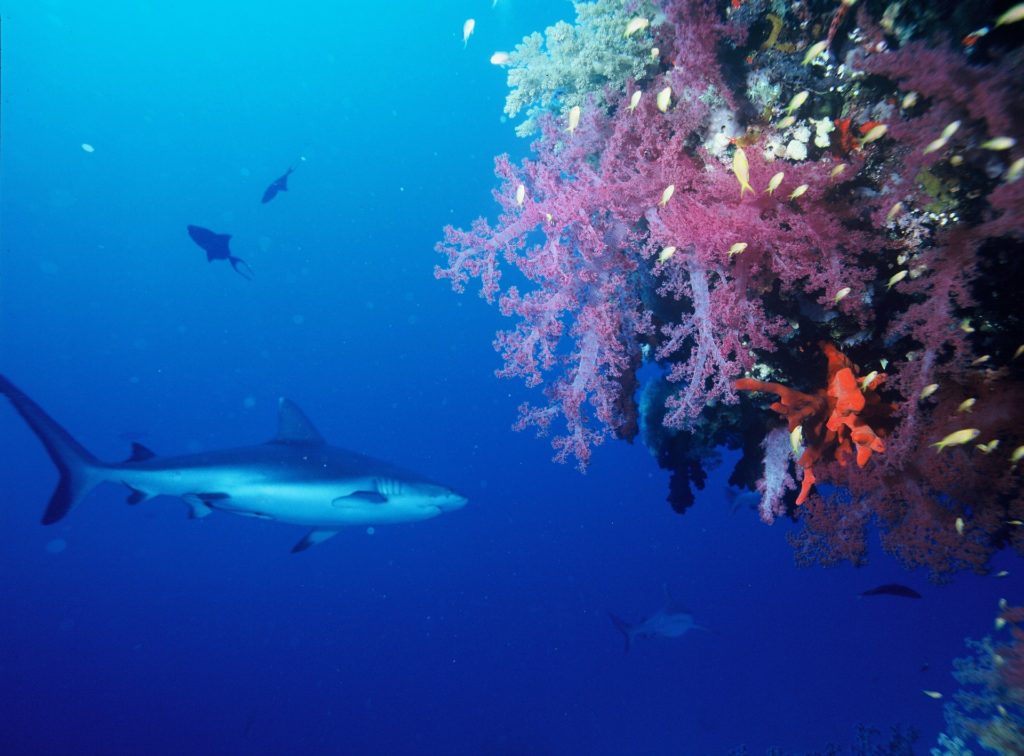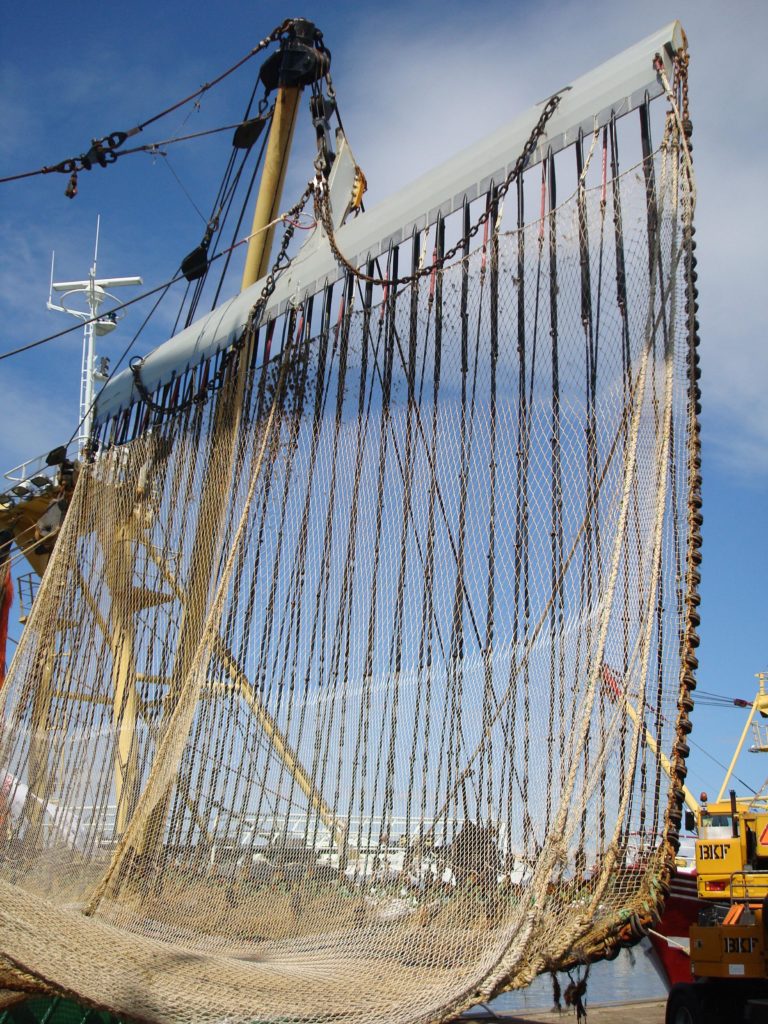الحزب من اجل الحيوانات يجب على الكل ان يتحدث عن الصيد الكارثي بالكهرباء
في 21 نوفمبر، ستصوت لجنة صيد الأسماك في البرلمان الأوروبي على صيد النبضات المثير للجدل، المعروف أيضا باسم الصيد بالكهرباء. يريد مجلس الوزراء الأوروبي الحد من هذه الطريقة الجديدة لصيد الأسماك التي تستخدم الكهرباء. وقد أثار ذلك آستياء الحكومة الهولندية التي نشرت لوبيا ثقيلا لإضفاء الشرعية على صيد النبض. انيا هازكمب البرلمانية الاوروبية تعمل جنبا مع جنب مع العلماء والمنظمات الغير الحكومية لمنع ذلك. الواقع أن الصيد بالكهرباء ينطوي على مخاطر غير مسؤولة عن الحياة البحرية ويعرض مستقبلنا جميعا للخطر. “الصيد المستدام (بالنبض) هو كذبة في الوقت الحالي” حسب هازكمب. هازكمب تدعو الجميع للتوقيع على عريضة ضد صيد النبض .

الصيد النبضي المثير للجدل هو تقنية صيد والتي تعمل بسحب أسلاك الكهرباء فوق قاع البحر حيث تعطي صدمة كهربائية. ونتيجة لذلك، تقفز الأسماك من القاع، ومن ثم يمكن صيدها بشبكة جر. ويحظر صيد الأسماك الكهربائية من حيث المبدأ في الاتحاد الأوروبي، ولكن حتى الآن لوبيات الضغط تمكنت دائما من إقناع المفوضية الأوروبية للسماح بالصيد النبضي على نطاق محدود
هولندا تريد الآن أن تذهب إلى أبعد من ذلك حيث تريد السماح لصيد النبض بلا حدود كطريقة صيد تقليدية. وتدعي الحكومة الهولندية بأن صيد الأسماك عن طريق النبض مستدام وصديق للأسماك. فهي تقارن باستمرار الصيد النبضي مع تقنيات الصيد الكلاسيكية، وخلق صورة مضللة حيث تنسى الجوانب السلبية. بينت الاختبارات التي أجريت على صيد النبض أن هذه الطريقة يمكن أن تؤدي إلى أضرار جسيمة ووفاة الأسماك. علاوة على ذلك، تشكل هذه الطريقة خطرا كبيرا على النظام الإيكولوجي في البحر. على سبيل المثال، يمكن أن يؤدي التعرض لفترات طويلة للكهرباء الخفيفة إلى تغيير التركيب الكيميائي لقاع البحر ويؤثر على حياة التربة. العديد من أنواع الأسماك حساسة للكهرباء: أسماك القرش والراي تستخدم الأشعة عند الصيد من أجل الغذاء.
ثمة خطر آخر هو أنه ـ العتاد الخفيف المستعمل في الصيد بالنبض ـ يمكن إستنزاف المناطق والتي كان من المفروض في السابق تركها للراحة. وهذا يعني أن مياهنا تتعرض الآن لخطر الإستنزاف بشكل أسرع. وفي الوقت الذي حذر فيه تقرير من الأمم المتحدة في وقت سابق من أنه إذا استمرنا في ذلك، فلن تترك أي أسماك في عام 2050. ويخلص الخبراء في ذلك التقرير إلى أن الكارثة السمكية لا يمكن تجنبها إلا إذا خفضت الحكومات الإعانات المقدمة لأساطيل الصيد، وإذا كانت الأسماك تحصل على مساحة أكبر في المحيطات، وذلك مثلا بإنشاء مناطق محمية. وبهذه الطريقة، تعطى النظم الإيكولوجية وأنواع الأسماك التي هي في حالة سيئة فرصة حقيقية للتعافي.

تتحمل مصايد الأسماك الهولندية مسؤولية جزئية عن الصيد الجائر الهيكلي في المياه الأوروبية. ويتعرض ما لا يقل عن 88٪ من أنواع الأسماك للصيد الجائر، ومن غير المحتمل أن تسترد 30٪ منهاعافيتها. ويعتقد حزب من أجل الحيوانات أنه يجب حظر أشكال الصيد المدمرة (الكهربائية أو الاخرى). ولا يجوز السماح بأي أساليب بديلة لصيد الأسماك إلا إذا استوفت معايير صارمة بشأن الاستدامة. الرفق بالحيوانات هي نقطة انطلاق هامة في هذا.
البرلمانية الاوروبية انيا هازكمب لحزب من اجل الحيوان:” صيد النبض له عواقب وخيمة على النباتات والحيوانات تحت الماء الضعيفة بالفعل. هذا الأسلوب يجعل الصيد على نطاق أوسع ممكن، في حين أننا نريد التقليل من الصيد. وانخفضت أعداد الأسماك في أوروبا بشدة إلى درجة أن جهود الصيد الحالية لم تعد فعالة من حيث التكلفة. وبدلا من السماح بإعادة بناء أرصدة سمكية، كما نصح العلماء، قررت الصناعة استنفاذ احتياطيات الأسماك المتبقية بكل الطرق الممكنة. صيد النبض يجعل من محيطاتنا مقبرة يجب علينا مقاومته بكل ما أوتينا من قوة.”
دعت هازكمب مع مجموعة من العلماء و المنظمات الغير الحكومية الجميع للتوقيع على إلتماس ضع صيد النبض. وقد وقع اكثر من 55000 شخص على العريضة بالفعل.
On the 21st of November, the General Fisheries Commission of the European Parliament will vote on controversial pulse fishing, also known as electrofishing. The European Council of Ministers wants to impose restrictions on this new way of fishing, which uses electricity. The Dutch government expressed its displeasure against the restrictions because it lobbied to a great extent to fully legalise pulse fishing. The Party for the Animals’ MEP Anja Hazekamp, together with scientists and NGOs, makes every effort to prevent full legalisation. After all, electrofishing entails imprudent risks for marine life and will threaten the future of us all. “Sustainable (pulse) fishing is currently a myth,” according to Hazekamp. Hazekamp calls on everybody to sign the petition against pulse fishing.

Controversial electric pulse fishing is a catching method that uses electric wires that are pulled across the seabed and release electric pulses. It causes fish to jump up from the seabed so that they can be caught in the trawling net. Technically speaking, electrofishing is prohibited in the European Union but until now, lobbyists have time and again managed to convince the European Commission to permit electric pulse fishing on a limited scale.
The Netherlands wants to go even further now and allow unlimited electric pulse fishing as a ‘conventional’ fishing method. The Dutch government and fishing lobby argue that electric pulse fishing is sustainable and fish-friendly. They consistently compare pulse fishing with classical fishing methods, which gives a misleading view and causes negative aspects to be forgotten. Testing on pulse fishing revealed that this method causes serious damage and the death of fish. Additionally, this method presents a great risk for the marine ecosystem. Long-term exposure to light electricity could, for example, change the chemical composition of the seabed and affect the seabed life. Many fish species are sensitive to electricity: sharks and rays use it when hunting for food.
Desertification of the oceans
Another risk is that – because of the lighter fishing gear that can be used for pulse fishing – they can fish in areas that were previously left alone. This means that our waters are threatened to be overfished even more. This despite the fact that the United Nations previously warned that there won’t be any fish left by 2050 if we continue fishing this way. In that report, experts concluded that the fish disaster can only be avoided if governments start to cut subsidies for fishing fleets and if fish are given more space in oceans, for example by setting up protected zones. That way, the ecosystems and fish species that are in a bad way will really get the chance to recover.

Dutch fishery is partly responsible for the structural overfishing in European waters. No less than 88% of the species of fish is overfished and 30% will more than likely not be able to recover. The Party for the Animals believes that destructive forms of fishing (electric or not) must be banned. Possible alternative catching methods may only be permitted when they comply with strict sustainability criteria. Animal welfare is a key principle in this.
Sign the Petition
The Party for the Animals’ MEP Anja Hazekamp: “Pulse fishing has disastrous effects on all vulnerable underwater flora and fauna. This method makes fishing possible on an even larger scale while we should actually reduce the fishing industry. The fish populations in Europe have decreased to such extent that the current fishing industry efforts are no longer cost effective. Instead of allowing the fish populations to grow again, as scientists advise, the fishing industry decided to deplete the remaining fish reserves in any way possible. Pulse fishing is changing our ocean into a cemetery and we must do everything in our power to oppose to it.”
Hazekamp, together with a group of scientists and NGOs, calls on everybody to sign the petition against pulse fishing. More than 55,000 people have already signed the petition.